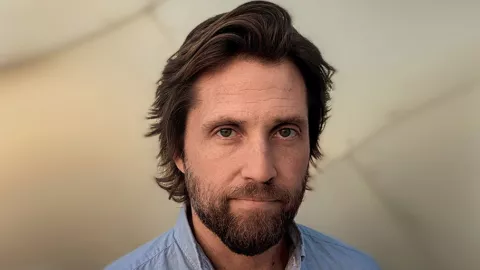
Nathan Thrall Longlist Interview
6 October 2023
How does it feel to reach the shortlist for the Samuel Johnson Prize?
I am astonished and delighted.
What research did you do for writing your book?
Through my previous biography of Edvard Munch, I was already familiar with that post-Darwinian period when Munch and Strindberg belonged to a bohemian circle in Berlin that was asking what it meant to be human if man was a mere evolutionary result. In fact, I came to Strindberg through Munch, on the basis that anyone who placed a loaded revolver on the table when sitting for a portrait and went around injecting apples with morphine to discover if they had nervous systems, had to be interesting.
Thousands of letters plus Strindberg’s nine volumes of autobiography were the obvious starting point, but I also visited most of the key places in his life, from his beloved Kymmendö, the island in the Swedish Archipelago that provided the setting for The People of Hemsö, to the Devil’s Gorge above the Danube, that provided the specific landscape in Inferno and To Damascus, and the Jardin des Plantes in Paris, where he fed cherries to his favourite bear.
My most remarkable research trip was to Denmark, where I stumbled across the rickety castle he lived in with the Countess and her servant that inspired the characters in Miss Julie. It was spine-tingling to stand in the room where he wrote the play. At the end of the visit I was presented with one of the elegant, but heavy, cast iron feet from Strindberg’s bathtub. It sat on my desk throughout the writing of the book.
How do you feel about the status/popularity of non-fiction works in general?
I think non-fiction is in good shape. In fact it seems to me that really good non-fiction now finds a wider audience than the best new novels do. Neil MacGregor’s History of the World in 100 Objects is a fine recent example of that. Outside the book world, the success of film documentaries like Senna or Searching for Sugar Man shows how much people like a true story.
What is your favourite non-fiction book and why?
I’ll settle for Richard Holmes’s Shelley: The Pursuit because it really showed me how serious biography can be just as gripping as any thriller. As a former novelist, I doubt I’d have been brave enough to try biography without the example he set.
What are you working on next?
I haven’t decided yet. There’s been little thinking time since Strindberg was published in March. I went straight into working on the sale of The Scream in New York in May and on to the Munch and the Modern Eye exhibition at Tate Modern. I’ve got three book ideas nagging at my mind. I’ve no idea which will get written first.